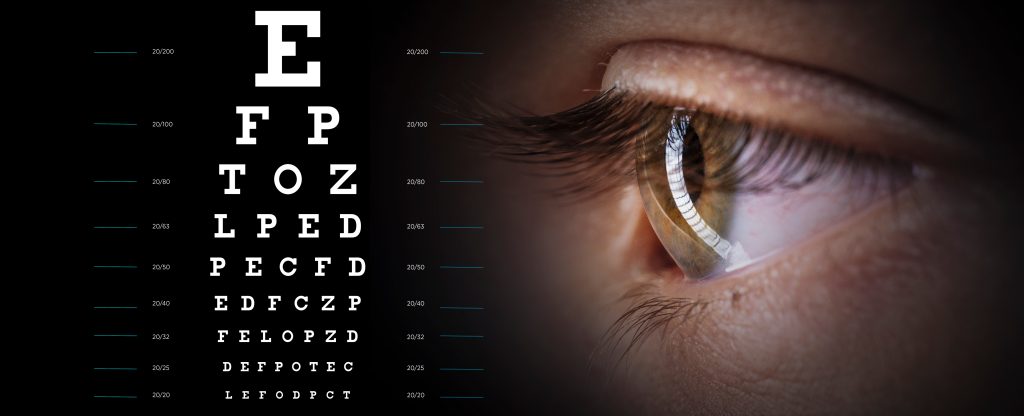In an ever-evolving world of eye healthcare, keeping up-to-date with the latest advancements in vision correction procedures can be daunting. One such progressive method is Refractive Lens Exchange (RLE). This RLE eye procedure, though not as widely recognized as LASIK or PRK. But it is making significant strides in its own right. Whether you’re considering RLE for yourself or simply want to understand more about it, our comprehensive guide aims to describe all about the procedure.
Contents
Understanding Refractive Lens Exchange
 Refractive Lens Exchange (RLE) is also known as Clear Lens Exchange (CLE) or Lens Replacement Surgery (LRS). It is a medical procedure aimed at correcting a range of vision issues such as myopia (nearsightedness), hyperopia (farsightedness), astigmatism, and presbyopia. In essence, it’s a proactive method to not only correct vision but also to prevent the development of cataracts – a common age-related eye condition.
Refractive Lens Exchange (RLE) is also known as Clear Lens Exchange (CLE) or Lens Replacement Surgery (LRS). It is a medical procedure aimed at correcting a range of vision issues such as myopia (nearsightedness), hyperopia (farsightedness), astigmatism, and presbyopia. In essence, it’s a proactive method to not only correct vision but also to prevent the development of cataracts – a common age-related eye condition.
At its core, RLE is a process similar to cataract surgery. The surgeon removes the natural lens of the eye, which could have potential or existing imperfections, and replaces it with an artificial intraocular lens (IOL). These lenses are designed to provide clearer, sharper vision and can be customized to fit the patient’s individual needs.
It’s important to note that, unlike other laser-based vision correction procedures like LASIK or PRK, which reshape the cornea, RLE eye procedure is irreversible. Since the natural lens is removed. However, if needed, the type of IOL can be replaced post-surgery.
How Does RLE Eye Surgery Work?
The science behind Refractive Lens Exchange (RLE) is fascinating and involves a precise combination of biology and technology. The procedure harnesses our understanding of the eye’s structure, light refraction, and cutting-edge optical devices to improve vision. Here’s a breakdown of how it works:
- The Eye’s Structure and Light Refraction: The human eye works much like a camera. The cornea and lens focus light onto the retina, the light-sensitive tissue at the back of the eye. Much like a camera lens focuses light onto the film or sensor. This light is then converted into electrical signals that are sent to the brain, forming images. The eye’s ability to focus light accurately onto the retina is crucial for clear vision.
- Lens Removal and Replacement: In RLE, the eye’s natural lens, which might be causing vision problems, is surgically removed. The surgeon makes a small incision in the cornea, uses ultrasound technology to break up the lens, and then carefully removes it. A synthetic intraocular lens (IOL) is then inserted in its place.
- The Post-Surgical Eye: After RLE, the eye works similarly to before. But the artificial lens cannot change shape to focus on different distances as the natural lens did. However, the chosen IOL will usually compensate for this limitation.
- The Outcome: Once the IOL is in place, light entering the eye is accurately focused onto the retina, correcting the previous refractive error. The result is improved vision without the need for glasses or contact lenses.
Remember, RLE is a surgical procedure, and like all surgeries, it comes with certain risks. It’s crucial to discuss these with your eye doctor to make an informed decision about whether RLE is the right choice for you.
What Is The RLE Eye Procedure?
 The RLE eye procedure is similar to cataract surgery, but instead of removing a cloudy lens (cataract), it removes a clear lens. And replaces it with an artificial intraocular lens (IOL). Here is a step-by-step breakdown of the RLE eye procedure:
The RLE eye procedure is similar to cataract surgery, but instead of removing a cloudy lens (cataract), it removes a clear lens. And replaces it with an artificial intraocular lens (IOL). Here is a step-by-step breakdown of the RLE eye procedure:
Consultation and Evaluation
Before any surgical procedure, an extensive consultation and evaluation process is essential to determine your candidacy for RLE. During this stage, you’ll undergo a comprehensive eye examination. The doctor will evaluate the overall health of your eyes, including:
- the cornea’s shape and thickness
- the retina’s condition
- your eye’s internal pressure
The doctor will also measure your refractive error to know the degree of your nearsightedness, farsightedness, or astigmatism. This information will help the doctor plan your treatment. Including choosing the most suitable intraocular lens (IOL).
Another crucial part of the evaluation is understanding your vision needs and lifestyle. If you enjoy activities like reading or crafts, which require good near vision, or you’re a driver who needs excellent distance vision, these factors will influence the type of IOL selected.
Choosing the Right Intraocular Lens
Once you’re determined to be a suitable candidate, the next step is to select the type of IOL. Intraocular lenses come in various forms, each designed to correct vision in different ways:
- Monofocal IOLs offer clear vision at one distance only, either near or far. If you choose a monofocal IOL for distance vision, you may still need glasses for near tasks, and vice versa.
- Multifocal IOLs are designed to provide clear vision at multiple distances. They work much like bifocal or progressive glasses, providing near, intermediate, and distance vision.
- Accommodating IOLs can shift focus between near and far, mimicking the eye’s natural lens movement.
The choice of IOL depends on various factors, including your specific vision needs, lifestyle, and the health of your eyes. Your doctor will guide you through the options and help you make the best decision.
The Surgery
RLE is an outpatient procedure performed under local anesthesia. This means you will be awake but will not feel any pain during the surgery. Here’s how the surgery generally goes:
- Anesthesia: The surgeon administers anesthetic eye drops to numb the eye and surrounding tissues. A mild sedative may also be given to help you relax.
- Incision: The surgeon makes a tiny incision in the edge of the cornea. Modern techniques allow for self-sealing incisions that typically don’t require stitches.
- Lens Removal: A small probe is inserted through the incision into the natural lens. The probe emits ultrasound waves that break up the lens into small pieces. These pieces are then gently suctioned out. This method is called phacoemulsification.
The procedure requires precision and expert surgical skills. Though it may sound complex, it typically takes less than 30 minutes per eye. It’s important to note that if you need RLE in both eyes, the surgeries are usually scheduled a week or two apart to allow each eye to heal.
Inserting the IOL
 Once your natural lens has been completely removed, the next step is to insert the chosen intraocular lens (IOL). This artificial lens will permanently replace your natural lens. And will function to focus light onto your retina, correcting your vision.
Once your natural lens has been completely removed, the next step is to insert the chosen intraocular lens (IOL). This artificial lens will permanently replace your natural lens. And will function to focus light onto your retina, correcting your vision.
The IOL is initially rolled up into a tiny cylinder and placed inside a special cartridge. This cartridge is attached to an injector. That is used to insert the IOL through the same small incision in the cornea that was used to remove the natural lens.
Once the IOL is inside your eye, it slowly unfolds and the surgeon carefully guides it into its correct position, replacing the natural lens in the “capsular bag” where the natural lens resided. Special instruments are used to make sure the IOL is perfectly centered and aligned.
It’s worth noting that the IOL cannot be felt or sensed in any way by the patient, and it does not require any maintenance. Once it’s in place, it functions very much like your natural lens
Recovery
After the surgeon confirms the IOL is in the right position, the RLE procedure is complete. Because the incision made during the surgery is so small, it can self-seal and often doesn’t require stitches. A protective shield is usually placed over your eye to prevent accidental rubbing or pressure while the eye begins to heal.
This shield is often kept in place for a few hours immediately after surgery, and you might be advised to use it while sleeping for a few days afterward. Since RLE is an outpatient procedure, you can go home the same day. However, you will need someone to drive you home as your vision may initially be blurry.
It’s crucial to remember that every patient’s experience with RLE eye procedure can be different. And this is based on individual healing processes, the specific type of IOL used, and the presence of any other eye conditions. Thus, specific aspects of recovery and post-operative care may vary. Always follow your eye doctor’s instructions and report any unusual symptoms immediately.
Conclusion
RLE eye procedure is indeed a remarkable one that encapsulates the advancements in the realm of ophthalmology. It holds great promise, offering a viable vision correction option for those not suitable for other refractive surgeries. RLE is more than just an intervention for vision correction. It’s a proactive approach to eye health, potentially removing the risk of cataracts before they even form.
However, it’s essential to remember that every medical procedure, including RLE, comes with its potential risks and benefits. Deciding to undergo RLE is a significant decision that should be made in consultation with a trusted eye care professional.
Eye surgery is a safe 10-minute procedure to help you get rid of glasses. EyeMantra offers the most advanced eye surgery options including PRK, Femto Lasik, SMILE surgery, Standard lasik, ICL and Contoura vision. If you have any questions on Lasik surgery in Delhi, Lasik surgery cost and Lasik procedure, call us at 9711116605 or email at [email protected].


